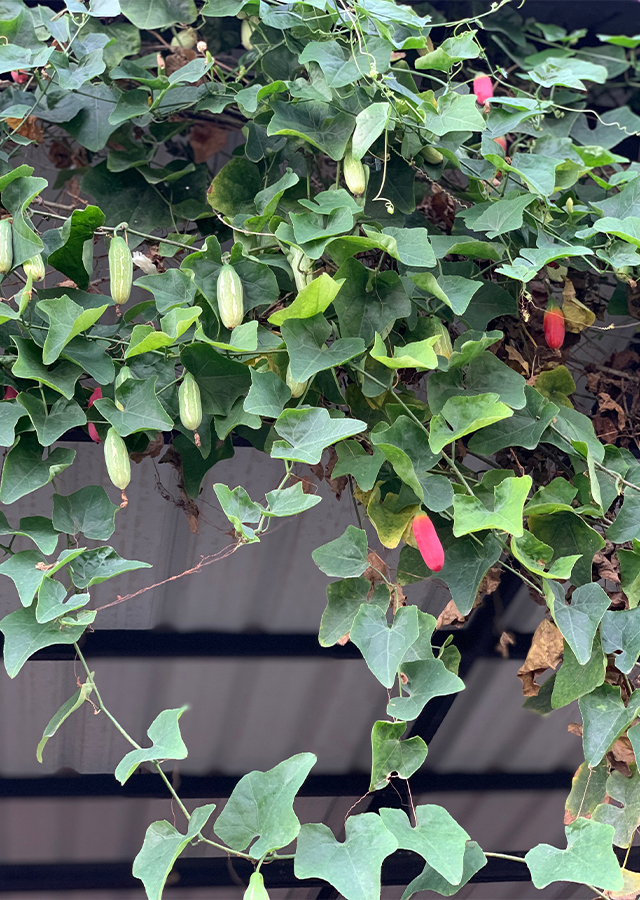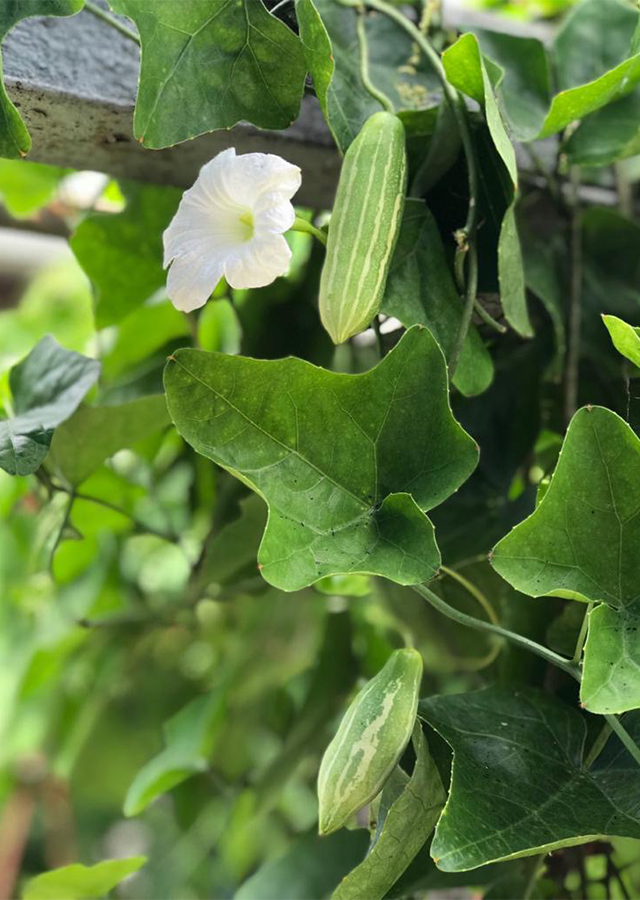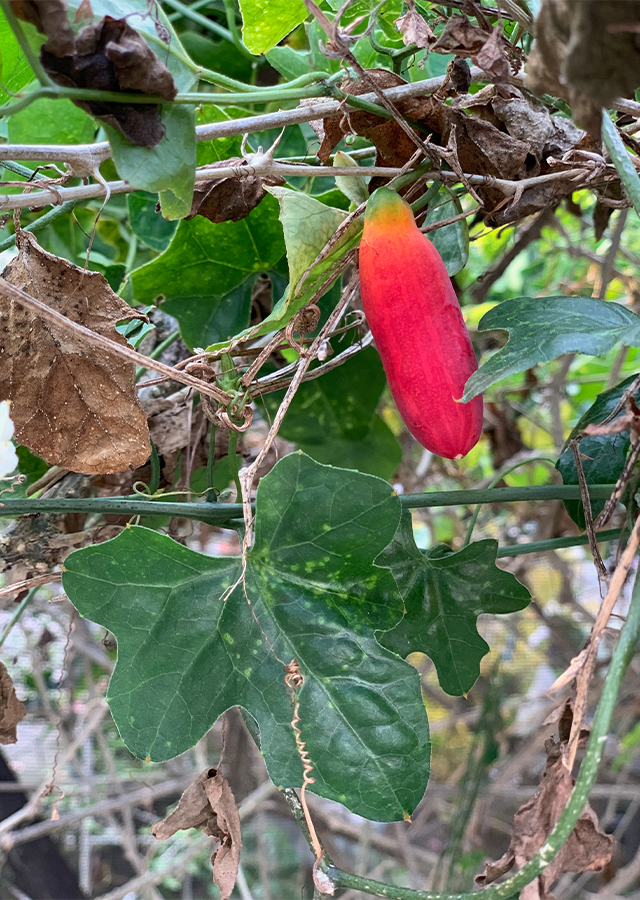Ivy gourd
Coccinia grandis (L) Voigt.
Cucurbitaceae
Location in our garden
Principal



Synonym
Habitus
Climbers. Dioecious perennial climbing herbaceous vine, growing to 3 m.
Part Used
Leaves
Fruit
Roots
Twigs
Growing Requirements
Need Shade
Habitat
Forest
Shrublands
Grassland
Overview
This plant is occurs wild in northern and eastern Africa, Arabia to tropical southeast Asia. It has spread and become naturalised in Tropical Northern Australia and Fiji and occasionally adventive in the neotropics. The plant is occasionally cultivated for its edible fruit and also its medicinal uses in tropical and sub-tropical zones, especially in India, Malaysia and Indonesia
Vernacular Names
Pepasan (Malaysia), Tam leung (Thailand), Hong gua (Chinese), Kanduri (Pakistan), Yasai karasu uri (Japanese), Courge ecarlate (French).
Agroecology
Ivy gourd is adaptable to wide diversity of habitats ranging. It is usually found growing at low altitude but is also found up to 1,000 m as in Uganda and up to 2,350 m elevation in Ethiopia in all types of soil. It is a robust, hardy, sun-loving and agggressive vine. It climbs over shrubs and trees and smoother them, forming a dense sun-blocking canopy.
Morphology
- Stems - green, ribbed when young, glabrous, with simple axillary tendrils.
- Leaves - alternate, simple, broadly ovate, 5- lobed, 5-9x4-9 cm, acute and mucronate at the apex, cordate at the base; surfaces glabrous or scaly, margins sinuate; petiole 1-5 cm long.
- Flowers - usually of solitary, ovoid to ellipsoid berry, 3-7 cm by 1-3.5 cm, green with longitudinal stripes when young turning bright red when ripe.
- Fruit - an ellipsoid or rarely spherical berry 3– 7 cm × 1–3.5 cm, fleshy, green with white stripes when young, turning red at maturity, many-seeded.
- Seeds - Seeds asymmetrically pear-shaped in outline, compressed, c. 6 mm × 3 mm, margin rather thick and grooved. Flat, 7 mm long.
Cultivation
- Generative (by seeds) propagation.
- Sow in pots of fairly rich soil placing 2-3 seeds in each pot. The seed usually germinates within 2-4 weeks at 20° C.
Chemical Constituents
- Stem and leaf: heptacosane, cephalandrol, alkaloids cephalandrins A&B.
- Root: resin, alkaloid, triterpenoid, saponin, flavonoid glycoside, lupeol.
- Fruit: cucurbitasin B, taraxerone, lycopene, cryptoxanthin, xyloglucan, carotenoids.
Traditional Medicinal Uses
- Studies have suggested antioxidant, antibacterial, antifungal, antihyperglycemic, anti-obesity, mosquito larvicidal, analgesic, antipyretic, anti-inflammatory, anticancer, antimalarial, antileishmanial, antitussive, hepatoprotective, mast stabilizing, antihistaminic, wound healing, antiulcer, antiurolithiatic, anticancer properties.The juice of the roots and leaves is considered to be a useful treatment for diabetes.
- The juice of the stems is dripped into the eyes to treat cataracts.
- The leaves are used as a poultice in treating skin eruptions.
- The fruit has sometimes been used as an eye-medicine.
- An infusion of the leaves is given to women to drink when a birth is overdue.
- A decoction of the plant is used to treat chest colds.
- The plant is crushed and applied externally to affected areas in order to relieve the pain of headache and rheumatism.
- In Sri Lankan traditional medicine, C grandis preparations are used for treatment of diabetes mellitus, urinary tract infections, bronchitis ulcers, and itchy skin eruptions.


